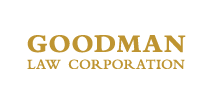March 2021 | Prescriptive Easement Rights for Old Roads— Permissive Use Transformed to Adverse Use when Ownership Changed
In Husain v. California Pacific Bank, No. A159067 (Ct. App. Mar. 9, 2021), the First District Court of Appeals evaluated whether a property owner had a prescriptive easement for a driveway and parking over portions of an adjacent property owner’s land. When tenants’ use of the adjacent land began, the two parcels of land had the same owner. After two banks acquired the properties, use of the land continued for more than five years in spite of complaints about trespass.
Facts of the Case
For over 50 years, a series of single owners owned two adjacent properties (the Willow property and the El Camino property). The most recent owner Hana Shiheiber acquired both properties in 2005 and allowed tenants of the El Camino property, an apartment building, to use portions of the Willow property. Specifically, the El Camino tenants used a driveway, parking area, had a garden, and placed garbage cans on the Willow property. The driveway is the sole means of accessing the Willow parking garage, outdoor parking area, and garbage cans, and use of the driveway was “substantial and constant”. Willow tenants frequently parked in the parking area and enjoyed the garden, and the sprinkler system for the garden is controlled from the El Camino property.
In 2011, Shiheiber defaulted on her mortgages for both properties and lost both of the properties through foreclosure. The Willow property was sold to JPMorgan Chase, and the El Camino property was sold to California Pacific Bank (the Bank). At the time, Shiheiber cross-complained to bank JPMorgan Chase’s complaint to foreclose, arguing that the bank had attempted to trespass on the Willow property.
El Camino tenants continued to use portions of the Willow property after the sale to Chase. The Bank ( as the owner of the El Camino apartments) maintained the driveway and parking area and made improvements, including rejuvenating the garden and building a retaining wall. The Bank never requested permission to use the Willow property, nor did JPMorgan Chase object to the use by the El Camino tenants.
Syed Husain then bought the Willow property from JPMorgan Chase in 2017. The facts presented at trial show that Husain was aware that the Bank claimed a prescriptive easement against the Willow property when he bought it. He signed multiple disclosure statements informing him about the El Camino tenants’ use of the Willow property and notification that the Bank claimed an easement for the benefit of the El Camino tenants. After the Willow purchase was completed and title passed, Husain quickly filed a lawsuit against the Bank to quiet title to the portions of the Willow property that had been used by the El Camino tenants. The Bank cross-complained, claiming a prescriptive easement.
After a court trial which included a site visit by the trial judge, the trial court held that the Bank had acquired a prescriptive easement on portions of the Willow property that had been used by the El Camino tenants. Husain appealed, arguing that use of the Willow property was permissive, until permission was repudiated or revoked by him after his purchase.
Did the Bank Establish a Prescriptive Easement on the Willow Property?
In California, the party claiming a prescriptive easement must show use of the property that is “open, notorious, continuous, and adverse for an uninterrupted period of five years.” The use must be sufficient to give the owner actual or constructive notice. Moreover, the user can only obtain a prescriptive easement if the owner could have taken legal action to prevent the use but failed to do so.
Here, Husain claimed not to contest the facts presented to the trial court. He did not claim an abuse of discretion. Rather, he argued that use of the Willow property was permissive and remained so even after the Willow property changed ownership, until it was revoked or repudiated by him following his purchase in 2017. However, the Court of Appeals found his argument unconvincing because the cases he cited in support did not involve the initial common ownership of the properties. Moreover, it noted that while Shiheiber did give permission for the use at one point, she explicitly alleged trespass against JPMorgan in her cross-complaint, indicating that in 2011 she believed the El Camino tenants’ use had become adverse and hostile.
The Court’s opinion explained that when two properties initially have the same owner, the owner can’t have an easement on one of the properties. The time period during which the properties have the same owner does not count toward the five-year period for establishing an easement. Several California cases support the conclusion that common ownership cannot lead to adverse use.
The Court of Appeal found that after the Bank and JPMorgan Chase acquired the properties, “the facts undisputedly establish the Bank never requested or received permission from JPMorgan to use the Willow property, and simply used the property as it did, a use that was open, notorious, continuous, and hostile for more than five years.” Further, if the El Camino tenants were using the Willow property before the sale pursuant to a license (as the Bank argued), the license was revoked when JPMorgan acquired the property and the use became hostile.
The Takeaway
In purchasing property, it is important to investigate neighbors “uses” such as a driveway, which may have already become a prescriptive easement. The To obtain a court order that a prescriptive easement exists requires developing admissible evidence of the history of the usage. When the facts show that someone has made open, notorious, continuous, and adverse use of property not under common ownership for more than five years, they have acquired a prescriptive easement.

